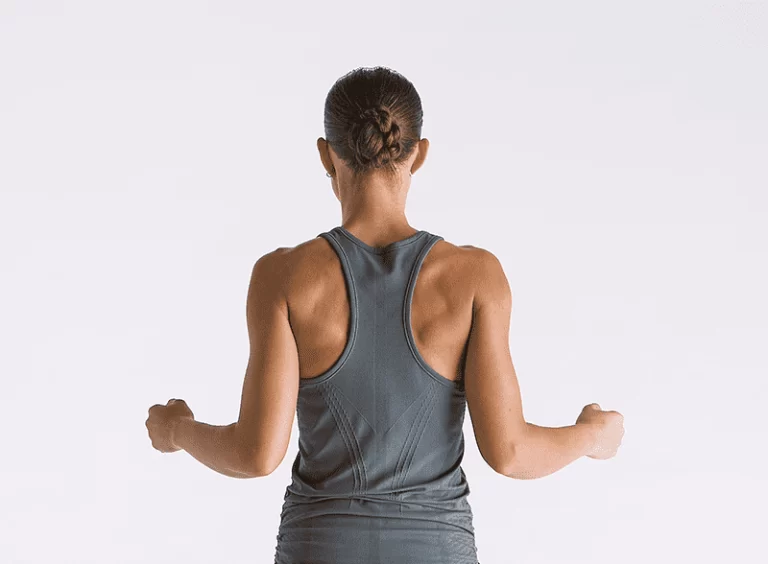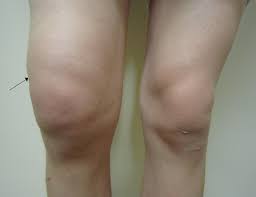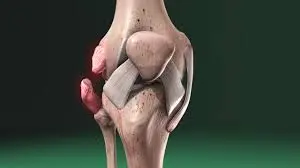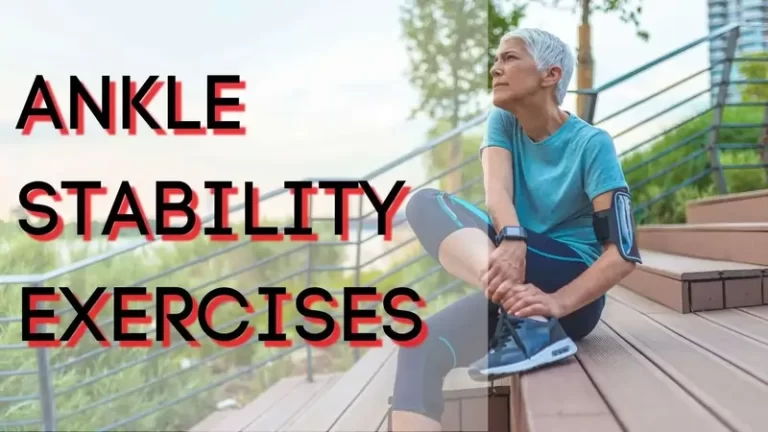15 Best Home Exercise for Wrist Drop
Exercise for wrist drops is an important part of your total treatment plan, in addition to your physical therapy and medical treatments.
The inability to extend the wrist and fingers as a result of injury or compression to the radial nerve is the feature of wrist drop sometimes referred to as radial nerve palsy. Stretching and strengthening exercises are often combined with specific wrist drop exercises to help the injured wrist and hand recover function and mobility.
The extensor muscles of the wrist and fingers are innervated by radial nerves, which is why people with reduced radial nerve function may not be able to actively extend them. As a result, the arm and hand stay irregularly in the flexion position when a patient tries to raise one arm to the horizontal. The opposing motion of the forearm flexor muscles keeps the wrist slightly bent. As a result, the posterior compartment’s extensor muscles become paralyzed.
Wrist Drop: What Is It?
The hands and wrists of the upper extremities are very active. Wrist function is necessary for so many daily activities. The tests of the wrist and upper limbs were conducted methodically to provide the most effective working diagnostic for the course of therapy. The bilateral hand comparison may be helpful because it might be difficult to diagnose problems affecting the hands and wrists.
Three varying levels of nerve injury include;
- Neurapraxia: The first-degree injury group is less serious.
- Axonotmesis: This leads to an injury of the second, third, or fourth degree.
- Neurotmesis: An injury of the fifth degree to the last sense, signifying a range of severe sorts of nerve damage.
Any location other than the proximal part of the dorsomedial forearm or a humeral shaft is extremely uncommon for wrist drop damage. However, loss of wrist extension, thumb extension and abduction, and finger metacarpophalangeal joint extension might result in motor paralysis in cases of more severe radial nerve palsy. Elbow extension is usually intact and triceps function is not affected by higher radial nerve palsy.
Wrist extension, which is highly relaxed and acts as a functional lack after the wrist drop, is necessary for proper flexor tendon tensioning. Low radial nerve palsy is caused by more distal nerve injuries that affect the posterior interosseous nerve. Wrist extension is maintained with a radial deviation because of the preserved extensor carpi radialis longus process. But without thumb extension, abduction, and finger metacarpophalangeal joint extension, The hand is inflexible and uncomfortable.
One of the three nerves that carry signals from your brain to your hand down your arm is the radial nerve. The radial nerve controls the action of your tricep muscles and permits your wrist to flex rearward.
Squeezing the radial nerve is possible by sleeping with your arm pulled under your body or by being in any other position that puts strain on the nerve for a prolonged amount of time. Crutches can put a lot of strain on the nerve, therefore using them is another major cause of injury. Another way that radial nerve constriction may happen is if you wear a watch or tight bracelet that keeps your wrist restricted for a long time.
See a doctor if you believe you may have a wrist drop so you can receive the correct diagnosis and treatment.
Causes:
Damage to the radial nerve may take place for a variety of reasons.
- Applying pressure while bending your arm over a chair’s back
- Crutches used incorrectly
- Slipping up on your arm
- Prolonged contractions of the wrists
- Sports injuries, work accidents, repetitive damage to the arm, and arm injuries are the most common causes of wrist drop.
- Depending on the extent of the damage, the radial nerve may be severed entirely.
- Breaking the humerus bone in the upper arm
- Putting your upper arm awkwardly when you’re sleeping
- Exposure to lead can cause chronic nerve damage. The entire neural system of the body may suffer long-term damage as a result of lead exposure.
- Diabetes and kidney disease may worsen symptoms such as inflammation, fluid retention, and other signs that point to nerve compression. This may have an impact on your body’s nerves, including the radial nerve.
- Certain medical conditions might affect one nerve and affect your entire body.
Signs and symptoms:
- A numbing feeling along the path of the nerve
- A weakness in the fingers, wrist, or hand loss of wrist, finger, or hand movement.
- Radial nerve injuries usually affect the thumb, index, and middle fingers as well as the rear hand.
- Your thumb and fingers might show unusual patterns in addition to acute or burning pain. It’s common to experience tingling, numbness, and trouble straightening your arm.
- You can’t extend or straighten your fingers or wrists.
- Damage to the radial nerve can result in pain, paralysis, and deformity of the wrist, hand, and fingers. Radial nerve palsy is a typical event with this.
Advantages of wrist-drop exercises:
- Strengthens and improves the forearm’s grip.
- Increasing the range of motion in your wrist joint.
- Strengthens the muscles that surround the hand joint, increasing stability.
- Regular, safe stretches can gradually improve long-term flexibility.
- In addition to its positive effects on physical health, exercise also has mental health advantages. Managing chronic pain can have a negative emotional impact. Endorphins are natural mood stimulants and painkillers that are released after exercise.
Precautions to take before starting an exercise therapy:
Before starting any exercise program, it’s important to consider a few safety measures and maximize the benefits. Consult with your doctor or physical therapist for advice on which exercises work best for your specific problem.
Being aware of your body and avoiding pushing beyond pain is important. Exercise often causes a little pain, but persistent or severe pain might suggest that you’re pushing yourself too hard. Start with low-impact workouts and gradually work your way up to more difficult ones as soon as you can handle greater difficulty.
It’s important to keep up proper form and technique to prevent further injuries. If you have questions about how to perform an exercise routine correctly, get help from a physical therapist. Warm up before any exercise to better prepare your joints and muscles for the workout.
Exercise for Wrist Drop:
Wall push-up
- With your feet hip-width apart, choose a position around arm’s length away from the wall.
- Both hands should be placed on the wall at a distance equal to your shoulders and with your fingers pointing upward, roughly shoulder-width wide.
- Place your feet closer to the wall if you think you’re reaching too far.
- Move your body toward the wall, bending your elbows slowly until your nose nearly touches it.
- Maintain a straight back and bend your elbows at a 45-degree angle (rather than straight to the sides).
- Hold this position for a few seconds.
- Then return to your neutral position.
- Then relax.
- Repeat this exercise five to ten times.
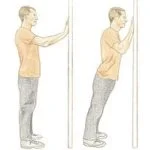
Finger Extension
- Put an elastic band around your fingers.
- Start by exerting pressure on your thumbs and fingertips.
- As you pull your fingers away from your thumb, the band will become tighter.
- Your fingers should be spread apart while staying near to one another.
- You need to be able to feel the elastic stretch a little bit as you work.
- Hold the stretch for a few seconds.
- Then return to your neutral position.
- Then relax.
- Repeat this exercise five to ten times.
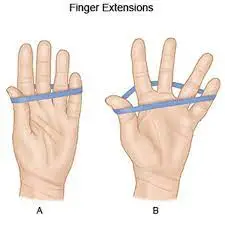
Ball squeeze
- Form your hands with your fingers around a tennis ball, sock, or rolled-up towel that you have in your hand.
- For a short while, hold on to it tightly and squeeze.
- Then return to your neutral position.
- Then relax.
- Repeat this exercise five to ten times.
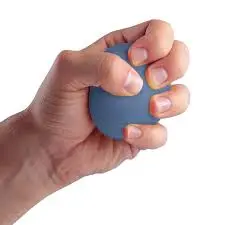
Wrist flexor stretch
- Raise one arm out in front of you while standing, palm toward the floor, and elbow straight.
- With your other hand, carefully move the palm of your outstretched hand as close to you as feels comfortable so that you can point your fingers toward the ceiling.
- As you perform this stretch, let your fingers flex and relax.
- Hold this position for a few seconds.
- Then return to your neutral position.
- Then relax.
- Repeat this exercise five to ten times.
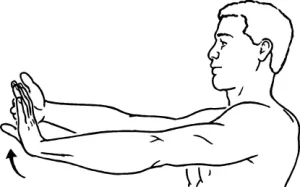
Wrist extensor stretch
- Raise your left arm straight in front of you and put your palm down.
- With your right hand, take hold of the left, bending it down until your left forearm extends.
- Hold this position for a few seconds.
- Then return to your neutral position.
- Then relax.
- Repeat this exercise five to ten times.
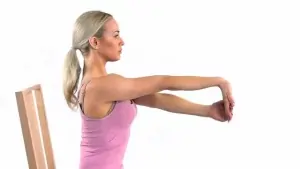
Radial nerve glide exercise
- As you stand, keep your arms by your sides.
- Reach down with your fingers and flex the shoulder of the affected arm.
- With your thumb facing your body, turn your arm inside out.
- Keep your hand facing the ceiling while you flex your wrist.
- As you extend your arm, bend your head away from it.
- With your head turned away and your wrist flexed, raise your arm and extend it out from your body.
- Hold this position for a few seconds.
- Then return to your neutral position.
- Then relax.
- Repeat this exercise five to ten times.
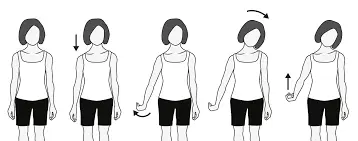
Wrist Supination
- Your affected hand should be kept close to your body, around your ribcage, with its elbow bent.
- Raise your hand and point it toward the ceiling.
- With your other hand, turn your forearm such that the palm is facing up until you feel the stretch.
- Hold this position for a few seconds.
- Then return to your neutral position.
- Then relax.
- Repeat this exercise five to ten times.

Hammer Rotation
- For this exercise, you will need a hammer, tool, or other similarly long, thin implement.
- Especially if your wrists are weak or sore, make sure it is not too heavy.
- With one hand on your greatest tool and the other resting on your thigh, lean forward on a chair.
- You can move your palm inside out and then carefully rotate your wrist such that your palm faces the base.
- After reversing it to the starting position, raise your palm so that it faces the ceiling.
- Then relax.
- Repeat this exercise five to ten times.
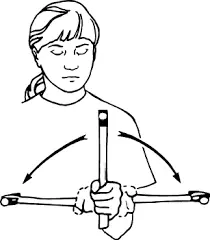
Wrist flexion and extension
- With your hand resting over the table’s edge, comfortably rest your forearm on it.
- After bending the wrist to point the hand downward toward the floor, raise it to point upward.
- To help extend your wrist so that your fingers point up to the top and then down to the bottom, use your extra hand.
- Then return to your neutral position.
- Then relax.
- Repeat this exercise five to ten times.
Wrist circles
- Start with a relaxing sitting or standing position on the ground surface.
- Next, squeeze your elbows against your body while raising your hands into fists.
- Then, keep your hands pointed downward and circularly spin your wrists to maximize your range of motion.
- Ten circles in each direction should be completed in a session.
- Additionally, move oppositely.
- Then return to your neutral position.
- Then relax.
- Repeat this exercise five to ten times.
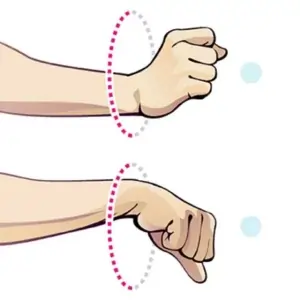
Fist-opener
- First, make a fist and hold it for a few seconds.
- Then, spread your fingers apart so that they resemble an open flat hand.
- Then return to your neutral position.
- Then relax.
- Repeat this exercise five to ten times.
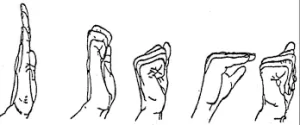
Praying position stretching
- First, stand or sit in the prayer position with their hands linked together.
- Make touch with each other with your elbows.
- The patient’s hands have to be in front of their face.
- Then, from the elbows to the tips of the fingers, the patient’s arms can make contact with one another.
- Next, gently extend the elbows apart while maintaining a pushed-together palm.
- Move the patient’s hands down to their waist while you proceed.
- Next, stop when they feel the stretch or when their hands come in contact with a belly button.
- Hold this position for a few seconds.
- Then return to your neutral position.
- Then relax.
- Repeat this exercise five to ten times.

Wrist extension with dumbell
- To perform this exercise, you must sit in a chair, place your elbow on the table, and hold a two-pound dumbbell straight in your hand.
- To straighten your wrist, bend it away from your body and point your palm down.
- If you find this workout too challenging, try it without any weight.
- Hold this position for a few seconds.
- Then return to your neutral position.
- Then relax.
- Repeat this exercise five to ten times.
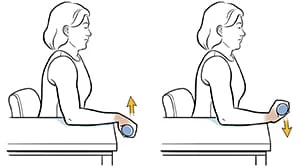
Ulnar and radial deviation (side to side)
- Maintain a straight wrist and fingers.
- Hold your forearm in place.
- First, move your hand toward your little finger, and hold the position for a few seconds.
- Then move toward your thumb again and hold this pose for a few seconds.
- Then return to your neutral position.
- Then relax.
- Repeat this exercise five to ten times.
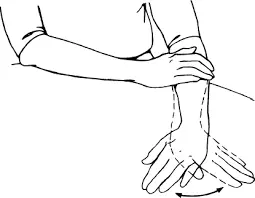
Wrist radial deviators strengthening with the theraband
- First, get into a comfortable position.
- This could be as simple as sitting on a chair and placing one hand over a rolled towel and the other in a mid-supination position at the edge of a table.
- Next, place one end of a band around the hand of a patient and the other end in the foot.
- Now move their hand upward against a theraband.
- Hold this position for a few seconds.
- Then return to your neutral position.
- Then relax.
- Repeat this exercise five to ten times.

Safety measures to follow when exercising:
It is best to begin exercises only after consulting a physician or physical therapist. Putting out safe, effective workouts that consider your specific situation is important.
- If you experience any kind of pain while working out, stop immediately.
- Before exercise, warm up and stretch.
- The protocol, which needs to be followed for every exercise, includes stretches before and between holds as well as the right amount of repetitions for each exercise.
- Wearing clothing that is too tight will restrict your ability to move freely while working out. Instead, dress comfortably.
- Even though stretching the tense muscle hurts, it’s safe to do so. However, as you stretch, you shouldn’t experience any severe or burning pain.
- Between workouts, give yourself a rest.
When did you stop working out?
- If resting has been recommended by your doctor.
- If performing this exercise causes you any pain.
- Headache
- Fever
Patient instruction:
The patient receives education regarding self-care practices, including the use of braces or assistive devices, stretching exercises, and correct wrist and hand placement. To minimize symptoms and encourage the best possible healing, it is advised that the patient adjust their activities.
Highlighting the importance it is to pay attention to the recommended treatment plans, which include attending physical therapy sessions, performing regular exercise, and taking medication as recommended.
There are recommendations for avoiding repeated or stressful activities, using ergonomic gear, and maintaining proper posture to prevent more injuries or worsening of the condition.
Summary:
The condition known as wrist drop, or radial nerve palsy, has been defined by a weakening or paralysis of the muscles that regulate wrist extension. The inability to fully extend the wrist and fingers, which results in a lowered or drooping wrist appearance, is one of the symptoms.
Targeted workouts to build the extensor muscles of the wrist and fingers and stretching activities to increase flexibility. Improving muscle strength, range of motion, and functional ability are the main goals of physiotherapy treatment for wrist drop.
Practice functional tasks and daily activities to get back flexibility and improve your coordination.
FAQs
Wrist drop is caused by which muscles?
A condition which leads to wrist drops is radial nerve palsy. Since the wrist and digit extensor muscles are innervated by the radial nerve, people with compromised radial nerve function are unable to actively extend these muscles.
Which nerve in the wrist drop is injured?
Damage to the radial nerve, which runs down the arm and controls the contraction of the triceps muscle at the back of the upper arm, results in a wrist drop.
What is the wrist drop treatment?
The first phase of treatment involves splinting the wrist and includes physical therapy, occupational therapy, and osteopathic medicine. Surgery to remove bone spurs or other anatomical defects that may be pressing on the nerve may be necessary in some cases.
What is the average recovery time following a wrist injury?
Most of the time, wrist drops caused by radial nerve palsy can be recovered. Approximately 75% of cases of radial nerve palsy resolve with conservative measures. It can take weeks or months for a radial nerve to heal following therapy, depending on the severity of the injury.
Is it possible to treat wrist drops?
Wrist drop may be caused by external compression, acute trauma, or systemic nutritional deficits. Treatment options could involve nothing at all, only employing splints to reduce compression, or, in severe cases, surgery.
What are some tips to improve the wrist drop?
Pharmaceuticals: Anti-inflammatory medications. painkillers.
Exercise to increase range of motion and build muscle.
Use a cast or splint.
Transcutaneous electrical nerve stimulation therapy.
Surgery: to fix a fractured limb. to restore the nerve.
Are wrist-strengthening exercises important?
You may be able to move your wrist more freely and have less stiffness after completing these exercises. Your muscles and joints may initially feel sore or stiff, but as you continue the exercises, this should improve.
What kind of pain does a wrist drop cause?
Feeling tingling, numb, or having trouble straightening your arm is normal. Furthermore, you may notice that your wrists and fingers are stiff. It is not always the case, and this is known as “finger drop” or “wrist drop.”
Which sleeping posture is ideal for someone with a wrist drop?
For the best position for your elbows and wrists, try sleeping on your back with your arms at your sides or held up on cushions. Avoid folding them across your body.
Which at-home wrist workouts are the best?
Wall push-up
Finger Extension
Ball squeeze
Wrist flexor stretch
Wrist extensor stretch
Wrist flexion and extension
Can a wrist drop be reversed?
In some cases, the wrist drop may go away over time if painful postures are adjusted, wounds heal, or tumors or cysts are eliminated. Most cases of radial nerve palsy-related wrist drop are curable. Treatment with conservative measures is effective in about 70% of cases of wrist drop.
Is wrist drop possible with the thumb involved?
Wrist drops are caused by weakening of the extensor carpi radialis longus (ECRL), while finger and thumb drops are caused by fascicular involvement of the posterior interosseus nerve (PIN). On the radial side of the forearm and thumb, sensory issues may also arise beyond the superficial radial sensory layer.
References:
- On December 13, 2023, P. Tirgar. PhysioMobile: The Top 14 At-Home Exercises for Wrist Drop. A mobile clinic for physical therapy. Here are the top 14 wrist drop exercises: https://mobilephysiotherapyclinic.in
- K. Ramasamy (2023). CPR 45 5 524 527.pdf can be found at https://jag.journalagent.com/cpr/pdfs/. 524–527 in Journal of Clinical Practice and Research. The publication’s DOI is 10.14744/cpr.2023.43153.
- Definition of Wrist Drop, Signs, Causes, Diagnosis, and Physiotherapy Treatment | CB Physiotherapy (unpublished). CbPhysiotherapy. Wrist-drop condition: https://cbphysiotherapy.in
- Image 8, Resistant Pronation/Supination. (n.d.). Occupational therapy (https://iris.hattiesburgclinic.com/patadv/exkit/0060000081foarm12_English.html).
- Image 14, https://iris.hattiesburgclinic.com/patadv/exkit/Occupational%20Therapy/English/0060000221wrist16_English.html Radial / Ulnar Deviation (Assistive). (n.d.).
- Image 15, Assistive Radial/Ulnar Deviation. (n.d.). 0060000221wrist16_English.html: https://iris.hattiesburgclinic.com/patadv/exkit/Occupational%20Therapy/English.


